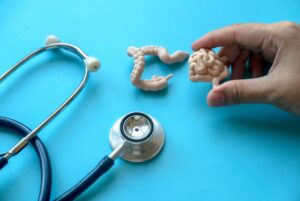Pilonidal sinus is a surgical condition that can cause significant discomfort and affect the quality of life of those who suffer from it. It is characterized by the formation of a cyst or abscess in the sacral area, usually related to the accumulation of hair and dead cells. Although there are several treatment options, advanced techniques in pilonidal sinus surgery have proven to be highly effective.
From Innova Cirugía, we will explore the latest innovations in the treatment of this condition and how they can benefit patients.
What is Pilonidal Sinus?
Pilonidal sinus is a disorder that develops in the sacrococcygeal region, where cavities form that can fill with hair, fat and dead tissue. It often presents with symptoms such as pain, inflammation and recurrent infections. Although it can affect people of any age, it is most common in young adults, especially men.
Common symptoms of pilonidal sinus:
- Pain and tenderness in the affected area.
- Inflammation and redness.
- Drainage of fluid or pus.
- Fever in cases of severe infection.
Causes of Pilonidal Sinus
Although the exact cause of pilonidal sinus is not completely clear, several risk factors have been identified that may contribute to its development:
- Hyperhidrosis: Excessive sweating can promote the formation of cysts.
- Obesity: Excess weight can increase pressure in the sacral area.
- Sedentary lifestyle: Spending long periods sitting may increase the risk.
- Genetics: Some people may have a genetic predisposition to develop this condition.
Treatment Options
Treatment of pilonidal sinus can vary depending on the severity of the condition. Options range from conservative care to surgery. However, surgical techniques have evolved considerably in recent years, offering more effective results with fewer complications.
Conservative Treatments
In mild cases, conservative treatments can be used, which include:
- Sitz baths: Help relieve pain and reduce inflammation.
- Antibiotic medications: If infection is present, antibiotics may be prescribed to control symptoms.
However, these methods do not address the underlying problem and the condition is likely to recur.
Advanced Surgical Techniques
Opening and Drainage
This is a basic technique used in acute cases. It consists of opening the cyst and draining the pus. Although it may provide temporary relief, it is not a definitive solution and recurrences are common.
Surgical Excision
Complete excision of the pilonidal sinus is one of the most effective techniques. It consists of removing the cyst and surrounding tissue. There are variations in this procedure:
- Open Excision: The wound is left open to drain, which may prolong healing time.
- Closed Excision: The wound is sutured after removal of the cyst, which may reduce healing time.
Flap Technique
This technique involves the use of a skin flap to close the area after excision. This not only closes the wound, but also improves blood circulation to the area, promoting better healing and reducing the risk of recurrence.
Laser Pilonidal Sinus Technique
The use of lasers in pilonidal sinus surgery is an innovative technique that has gained popularity. This technique involves using laser energy to precisely remove the affected tissue. Benefits include:
- Less postoperative pain: The laser technique tends to cause less trauma to the surrounding tissues.
- Faster recovery: Patients usually experience a shorter healing time.
- Lower risk of complications: Laser precision reduces the risk of infections and other post-surgical problems.
Fistulectomy Technique
In more complex cases, where there are multiple sinuses or a history of recurrences, fistulectomy may be necessary. This procedure involves removal of all pilonidal sinuses and cleaning of the cavity.
Postoperative Care
Postoperative care is crucial to ensure a successful recovery and minimize the risk of complications. Some recommendations are as follows:
- Keep the area clean and dry: This helps prevent infection.
- Avoid pressure on the area: Using cushions or pillows can help reduce pressure on the affected area.
- Follow the surgeon’s instructions: It is essential to follow the instructions for wound care and medication administration.
Recurrence Prevention
Prevention is key in the management of pilonidal sinus. Here are some strategies:
- Maintain good hygiene: Regular cleaning of the sacral area can help prevent the accumulation of hair and dirt.
- Weight control: Maintaining a healthy weight can reduce pressure on the affected area.
- Avoid excessive sweating: Wearing appropriate clothing and keeping the area cool and dry can help prevent new cysts from forming.
Pilonidal sinus is a condition that can cause significant discomfort, but advanced techniques in surgery have greatly improved outcomes for patients. From excision to laser techniques, the options available allow this condition to be addressed effectively and with minimal complications.
If you suffer from pilonidal sinus, at Innova Cirugía we offer advanced techniques such as the modified Karydakis flap and laser treatments. Contact us to enjoy a quick recovery with minimal scarring. Contact us to enjoy a quick recovery with minimal scarring, your wellbeing is our priority!




